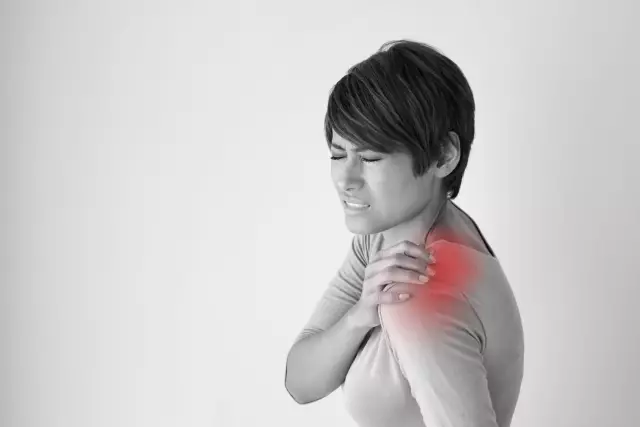- Author Curtis Blomfield [email protected].
- Public 2023-12-16 20:44.
- Last modified 2025-01-23 17:01.
Providing first aid at the scene of an automobile or man-made accident requires decisiveness, speed and confidence in action. In the event of a head injury, it is important to ensure immediate and safe transport of the victim to the hospital. The position or condition of the injured person does not always make it possible to bandage the wounds properly. Then a simple fixing bandage is applied - sling-like, which conveniently covers rounded surfaces.
Preparation of dressing material
Like any other dressing, the sling is applied using a bandage and a pad of cotton-gauze swab or sterile gauze. It is fixed with the help of four free ends of the bandage with two knots. Therefore, it is required to prepare it in advance:
- cut off a piece of wide bandage longer than the coverage of the head to leave room for tying;
- cut or tear this piece from both ends so that long ties are obtained, and in the center there is a whole area 5-10 centimeters long (depending on the place where the bandage is applied);
- on the central part, lay a gauze napkin folded in several layers or cotton wool wrappedgauze.
The surface of the pad that will be in contact with the wound surface must be sterile, so you need to touch it from the back.

First aid teams can be equipped with a modern version of this bandage, which is fastened very quickly with contact tape. As a rule, they are used for injuries of the lower jaw.
Fixation of the sling-like bandage on various areas of the head
On convex surfaces, a good fit and fastening of the dressing should be ensured. To do this, the sling-like bandage is fixed crosswise, forming a cup-shaped recess in the center that covers the damaged area. At the same time, the lower ties go up, and the upper ones, on the contrary, go down.

The sling-like bandage on the nose has the shortest middle part, 5-6 cm. First, the nose area is covered with the central part of the bandage. Then the lower ties are fixed at the crown, and the upper ones under the back of the head.
In case of damage in the region of the crown or forehead, a wider piece of gauze or fabric is taken for the bandage. The ends of the fabric are tied under the back of the head and chin, not forgetting to cross them.
A sling-like bandage is applied to the jaw not only for injuries, but also for fractures, dislocations of the mandibular joint. She should fix this part of the skull well, so the ties are made for her longer than usual. The lower ends are tied at the crown of the head, and the upper ends are brought under the back of the head, crossed, and then fixed onforehead. This prevents the lower loop from slipping off the parietal region.
Other overlay options
The use of a sling bandage is justified on any part of the body with an uneven surface: on the shoulder, in the groin or underarm. It can be used to pre-fix a cotton-gauze pad if bandaging is done "in one hand".
Because of its cost-effectiveness, this bandage may be the only possible option when there is a lack of dressing material.
According to the principle of a sling bandage
The cotton-gauze bandage (personal respiratory protection) is based on the principle discussed above.
It should tightly cover the area of the nose and chin, therefore it has a rather large middle part filled with a layer of cotton wool, at least 20 centimeters in length and width. Ties tightly at the crown and under the back of the head.

For its manufacture, a gauze cut is taken, a rectangle of several layers of cotton roving is placed in the center, laid top and bottom. In the area of the lining, the bandage is stitched along the perimeter and through the center. The loose parts of the gauze are cut in two and also quilted for strength.
In emergencies, when there is no time to prepare PPE, you can use a piece of fabric with the edges torn and a thick layer of cotton in the middle.






